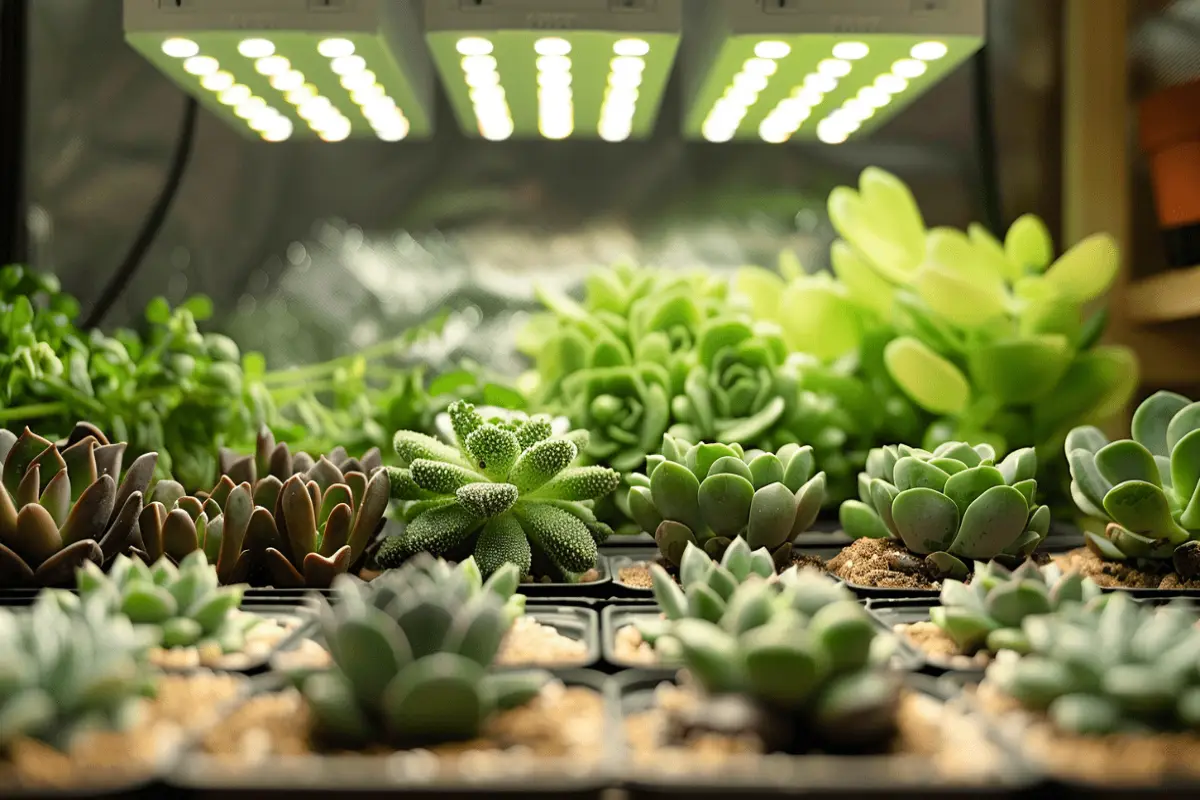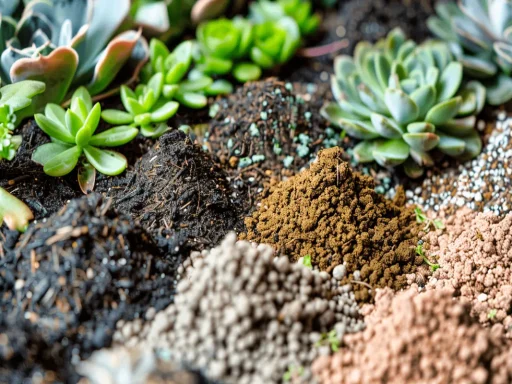When it comes to nurturing your succulents, you’ve probably heard that light is key.
But do you truly grasp the nuances that determine whether your propagation efforts will flourish or falter?
Understanding how to provide optimal lighting for your succulents is more than just a matter of flicking a switch.
It involves a delicate balance of factors that can make or break your succulent propagation journey.
Curious to discover the secrets that will set you up for success?
Table of Contents
Key Takeaways
- Succulents thrive with 12-14 hours of daily exposure to grow lights for successful propagation.
- Proper light spectrum (400-700nm) is crucial for optimal growth and development.
- Consistent light quality at 6500K promotes strong root formation during propagation.
- Adjust light intensity (2000-3000 foot candles) and positioning (6-12 inches) for healthy succulent growth.
Understanding Succulent Light Requirements

To ensure successful succulent propagation, understanding their specific light requirements is essential. When it comes to proper lighting for succulents, the type of grow light plays a crucial role.
Two common types of grow lights for succulents are LED and fluorescent. LED grow lights are recommended to be positioned 18 to 24 inches above succulents, while fluorescent bulbs should be placed 6 to 12 inches away for optimal growth.
In addition to the distance from the light source, the color temperature of the grow lights is also important. For succulent growth, the best color temperature is around 6500K. However, if you want your succulents to bloom, a color temperature of 3000K is more suitable.
CANAGROW LED Plant Grow Lights for Indoor Plants, Full Spectrum Small Desk Plant Light 6500K White Gooseneck Growing Lamps for Seedlings Succulents House Plants, Auto On/Off Timer & 10 Dimmable Level
Furthermore, succulents require approximately 12 to 14 hours of exposure to grow lights daily. It’s essential to provide these breaks to mimic natural sunlight cycles and ensure the overall health and growth of your succulents. By understanding and implementing the proper lighting requirements, you can effectively propagate healthy succulents in your indoor garden.
Natural Light Vs. Artificial Light

When considering natural light versus artificial light for your succulent propagation endeavors, keep in mind that light quality matters significantly. Understanding the timing and duration of light exposure, as well as the placement considerations for your succulents, can impact their growth and development.
Light Quality Matters
For successful succulent propagation, understanding the difference between natural light and artificial light quality is crucial. Succulents need proper light quality to thrive, whether it comes from natural sunlight or artificial grow lights.
Natural light provides a full spectrum of wavelengths necessary for succulent growth, while artificial LED grow lights can replicate these wavelengths to support healthy development. LED grow lights, in particular, offer specific wavelengths that are essential for root development and overall succulent well-being.
Ensuring consistent light quality is key to promoting strong root formation and successful propagation of succulents indoors. By providing the right light conditions, you can optimize photosynthesis and energy production, ultimately leading to successful succulent propagation.
Timing and Duration

When determining optimal lighting conditions for succulent propagation, considering the timing and duration of natural light versus artificial light is essential for successful root development and overall plant health.
Natural light varies in intensity and duration depending on location and season, affecting succulents’ growth rates. In contrast, artificial grow lights like fluorescent, compact fluorescent, and high-intensity discharge provide consistent lighting schedules, crucial for controlling light duration and intensity, which are measured in Kelvins.
Understanding the importance of when and how long to expose succulents to light is key to promoting healthy root growth and successful propagation outcomes. While natural light fluctuates, grow lights offer a stable light source, ensuring optimal conditions for succulents’ growth.
Placement Considerations
Consider placing your succulents strategically to maximize the benefits of natural light and artificial grow lights for successful propagation.
When indoors, using a combination of natural light and grow lights can provide the necessary full spectrum of wavelengths for optimal succulent growth. While natural light is beneficial, it may not always be sufficient, especially in areas with limited sunlight exposure.
Artificial grow lights can supplement natural light by offering adjustable intensity and duration tailored to your succulents’ needs. Proper placement of grow lights near your succulents can enhance photosynthesis and root development during propagation.
Ideal Light Spectrum for Succulents

To maximize succulent growth and development, ensure that the light spectrum ranges between 400 to 700 nanometers, covering blue, red, and far-red wavelengths. Here’s what you need to know about the ideal light spectrum for your succulents:
- Blue Light (400-500nm): This wavelength range promotes compact growth and chlorophyll production in succulents, helping them stay healthy and vibrant.
- Red Light (600-700nm): Succulents benefit greatly from red light as it aids in photosynthesis, flowering, and overall plant development, ensuring robust growth.
- Far-Red Light (700-800nm): Playing a crucial role in seed germination and flowering responses, far-red light is essential for the successful propagation of your succulents.
- Balanced Spectrum: By balancing these different wavelengths in the light spectrum, you provide your succulents with the optimal lighting conditions necessary for their propagation and growth.
Duration of Light Exposure for Propagation
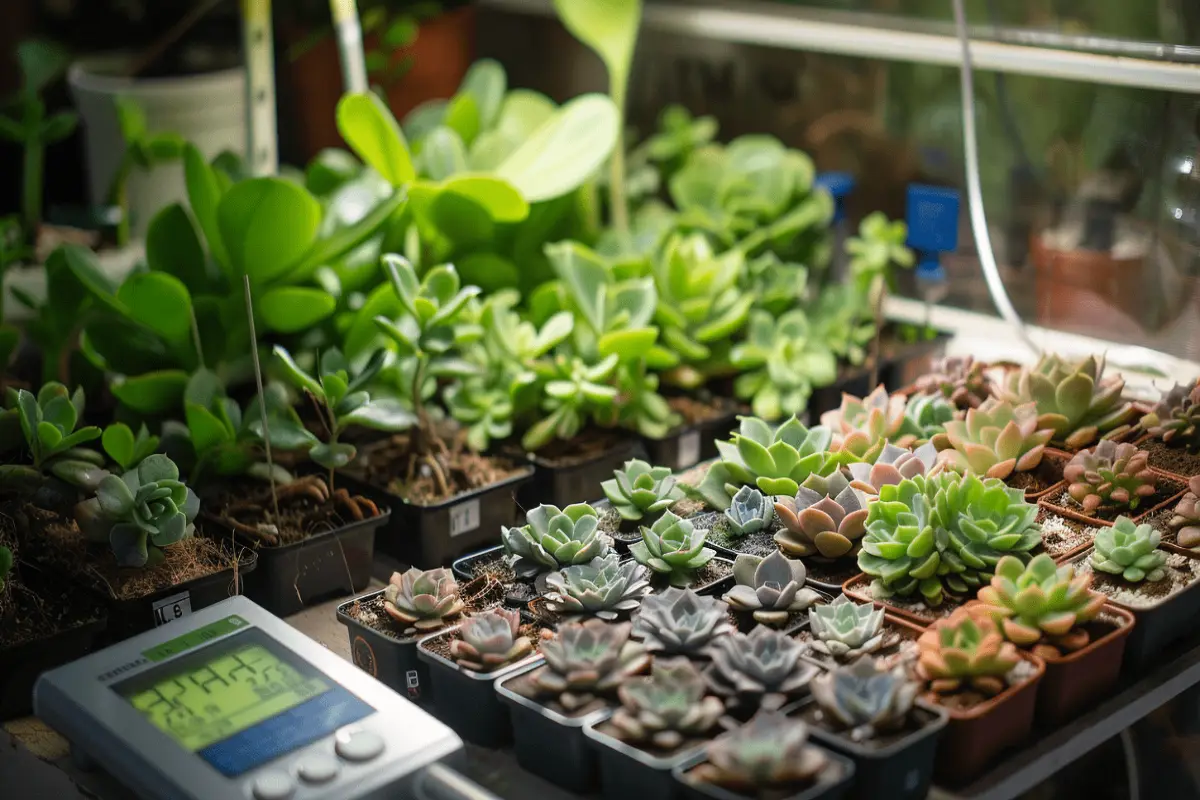
To ensure successful propagation of your succulents, maintaining a consistent 12-14 hours of daily light exposure is essential for promoting healthy growth and root development. Adequate light exposure plays a crucial role in stimulating root development during succulent propagation.
Consistency in light exposure is key to establishing strong and robust roots, ultimately contributing to successful growth. The duration of light exposure directly impacts the success of succulent propagation by supporting essential processes like photosynthesis and nutrient absorption.
By providing the recommended 12-14 hours of light each day, you enhance the chances of successful leaf propagation and the development of new plants. Remember, the right amount of light exposure is fundamental for the overall health and vitality of your propagated succulents.
Stay diligent in ensuring they receive the necessary light duration for optimal growth and propagation success.
Fosmon 24 Hour Programmable Digital Timer Outlet (2 Pack), ON/Off Program, LCD Display, Mini Indoor Single Plug-in, 125V 15A for Seasonal Light, Lamp, Heater, Portable Fan, Aquarium
Positioning Grow Lights for Success
Position your grow lights 6 to 12 inches away from your succulents to ensure optimal light exposure and prevent burning. Proper positioning of grow lights is crucial for successful succulent propagation. Here are some essential tips to help you position your grow lights effectively:
- Adjust based on size: Depending on the size of your succulents, you may need to raise or lower the grow lights to maintain the recommended distance. Larger succulents may require lights to be positioned closer to ensure adequate light exposure, while smaller ones may need the lights slightly higher.
- Consider the type of grow light: Different types of grow lights emit varying levels of intensity and heat. Be mindful of the specific requirements of your succulents and adjust the distance accordingly to avoid overheating or insufficient light exposure.
- Promote root development: By positioning the grow lights at the right distance, you can encourage healthy root development in your succulents, leading to robust growth during propagation.
- Rotate for even distribution: To ensure uniform light exposure, rotate your succulents weekly under the grow lights. This practice helps prevent leggy growth and promotes overall plant health.
Adjusting Light Intensity as Succulents Grow
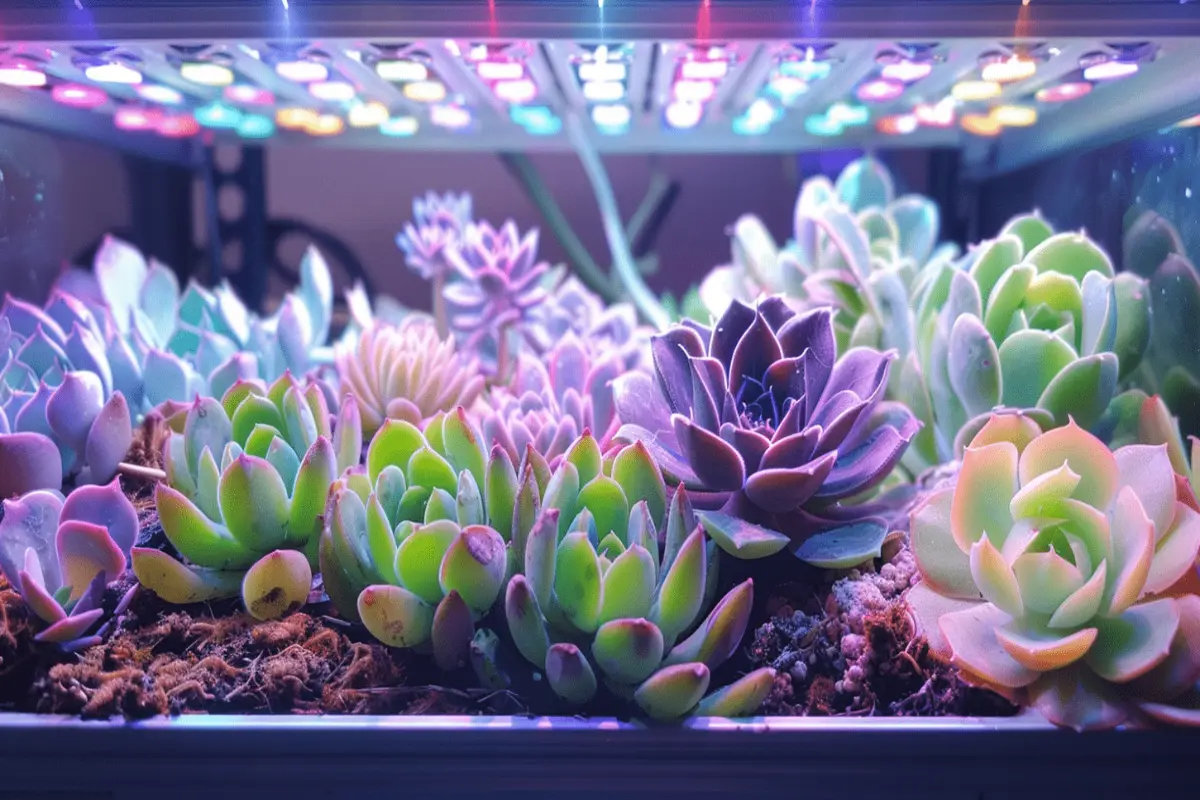
How can you adjust the light intensity as your succulents grow to promote healthy development and prevent stretching?
As your succulents grow, it’s crucial to monitor their light needs closely. Adjust the light intensity by raising the lights to maintain the optimal distance of 6 to 40 inches above the plants. Increasing light intensity as succulents grow can help promote healthier growth and prevent stretching or etiolation.
It’s important to lower the light intensity for newly propagated succulents to avoid burning or stressing the tender plants. As the succulents establish roots and grow stronger, gradually acclimate them to higher light levels.
Monitoring Light Levels for Optimal Growth
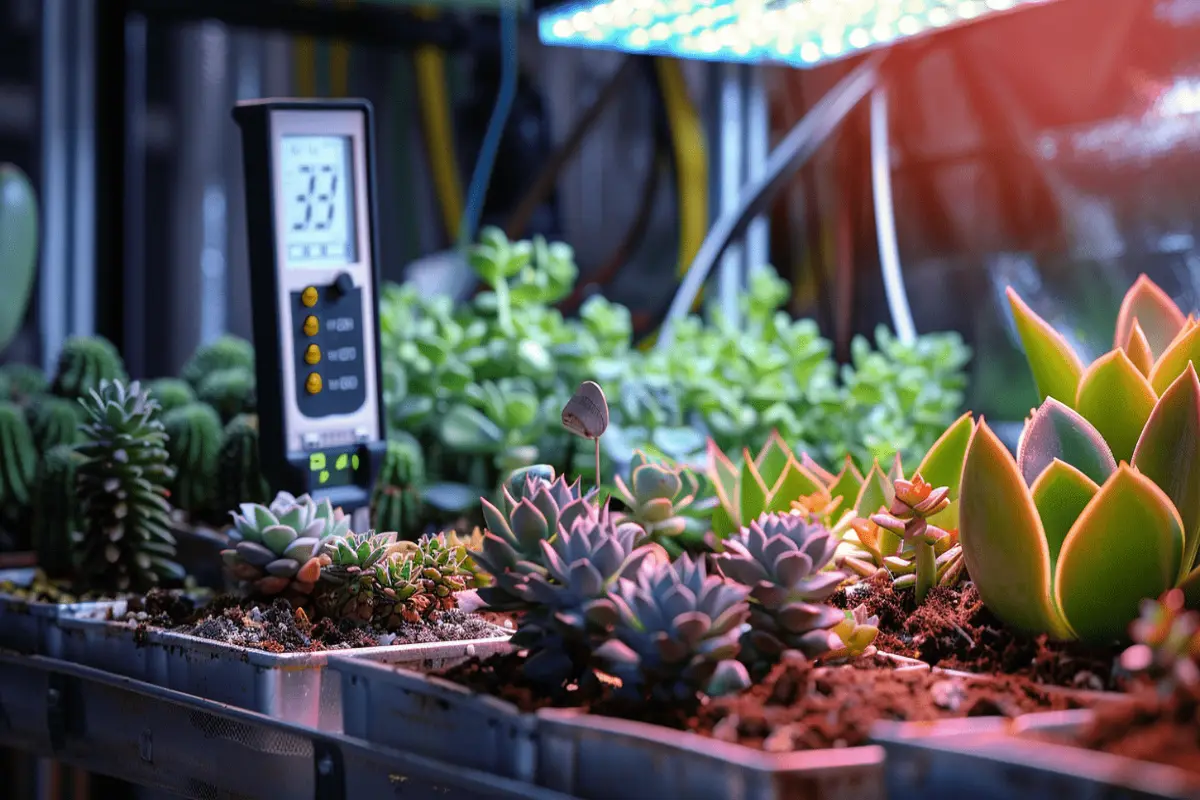
Properly monitoring light levels is essential for achieving optimal growth conditions in succulent propagation. Here are some key tips to help you monitor light levels effectively:
- Use a Light Meter: Invest in a light meter to accurately measure the light levels your succulents are receiving. This tool will ensure you provide the ideal conditions for successful propagation.
- Aim for 2000-3000 Foot Candles: Aim to maintain light levels between 2000-3000 foot candles for the best outcomes in succulent propagation. Consistent light within this range is crucial for healthy growth.
- Adjust Based on Succulent Species: Different succulent species have varying light requirements. Adjust the light intensity based on the specific needs of the succulents you’re propagating to promote optimal growth.
- Utilize Supplemental Grow Lights: When propagating succulents indoors, supplement natural light with grow lights to ensure a steady and sufficient light source. This will help maintain consistent light levels necessary for successful propagation and root development.
Light Meter Digital Illuminance Meter Handheld Ambient Temperature Measurer, Range up to 200,000 Lux, Luxmeter with 4 Digit Color LCD Screen
Troubleshooting Common Light-Related Issues
If your succulents are showing signs of pale or elongated growth, it may indicate they aren’t receiving enough light. Inadequate light can lead to yellowing leaves, slow growth, and a leggy appearance in your plants. These symptoms are clear indicators of a light deficiency affecting your succulents’ development.
To troubleshoot these common light-related issues, consider increasing the light intensity or duration of exposure for your plants. Adjusting the placement of your succulents to a brighter location or supplementing with artificial grow lights can help address the problem.
Keep in mind that light intensity directly impacts the successful propagation of succulents, so ensuring they receive adequate light is crucial for their overall health and growth. By addressing these light-related issues promptly, you can help your succulents thrive and prevent further elongated growth or yellowing leaves caused by insufficient light.

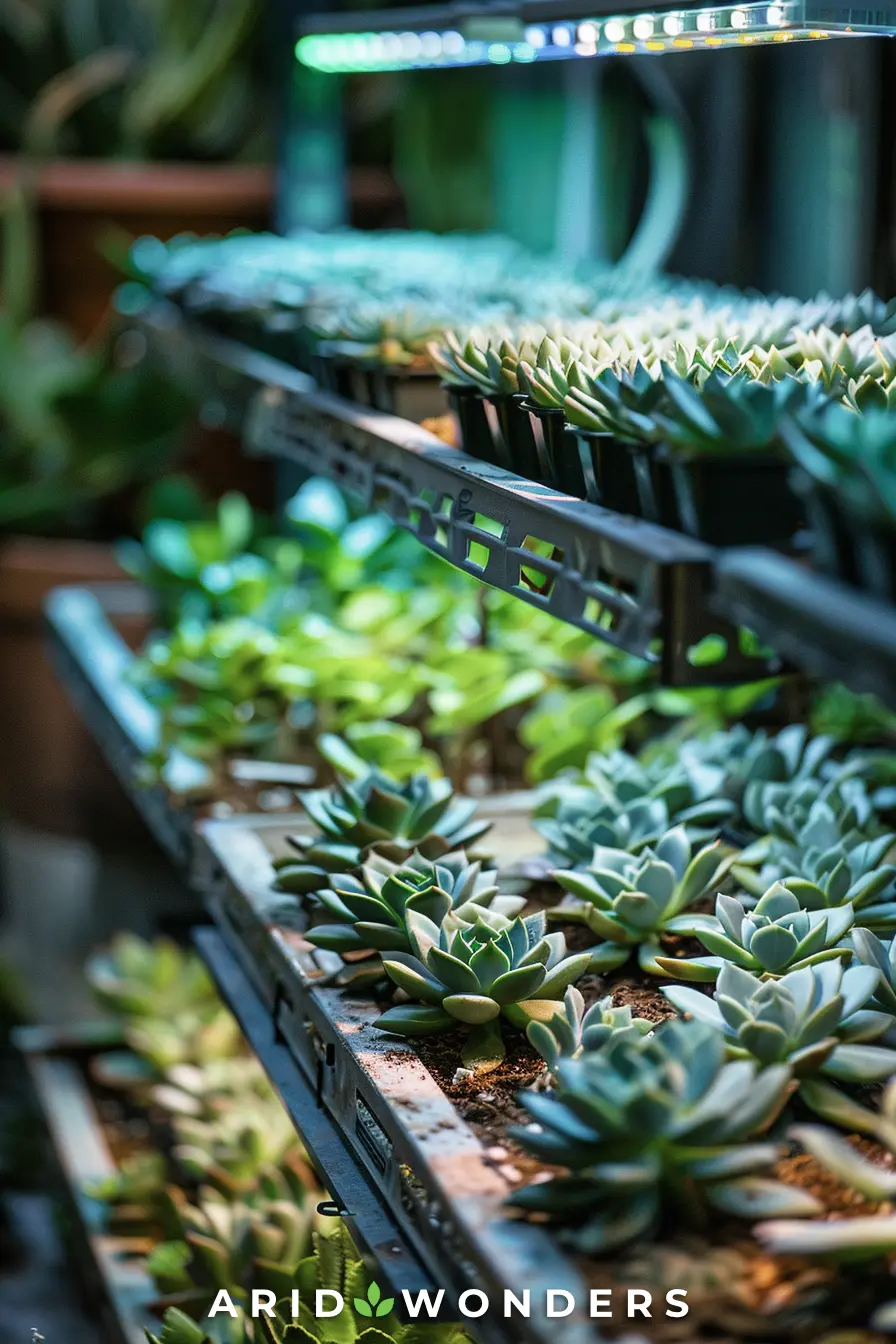
Ensuring optimal lighting is essential for successful succulent propagation indoors. By understanding their light requirements, using the right light spectrum, and adjusting light intensity as needed, you can promote healthy growth and vibrant colors.
Remember to monitor light levels, position grow lights correctly, and troubleshoot any issues that may arise. With the right lighting conditions, your succulents will thrive and propagate successfully in any indoor environment.
JINHONGTO 2Pack Desk Grow Light Full Spectrum, Table Top Plant Grow Light, IR-UV Included LED Grow Lights for Indoor Plants, 25 Watt 208pcs LEDs, 16"-24" Height Adjustable, Daisy Chain Function
Frequently Asked Questions
What Kind of Light Is Best for Propagating Succulents?
For propagating succulents, the best kind of light is full spectrum LED grow lights with a color temperature of 6500K. They provide precise wavelengths for root development. Fluorescent T5 tubes can work too with proper intensity and duration.
How Much Light Do Succulent Propagations Need?
To thrive, succulent propagations need 12-14 hours of light daily. Balance light exposure for sturdy growth. Use 6500K LED grow lights, positioning them 6-12 inches away. Monitor plant response, adjusting light for successful propagation.
How Bright Should Grow Lights Be for Succulents?
To ensure your succulents thrive, aim for grow lights that emit 2000-3000 lumens per square foot and have a color temperature of 5000-6500 Kelvins. This brightness level supports healthy root development and overall plant growth.
What Are the Best Conditions for Succulents to Propagate?
For successful succulent propagation, provide well-draining cactus soil, indirect sunlight, and consistent temps of 65-75°F. Avoid overwatering to prevent root rot. Ensure proper air circulation for strong roots. These conditions promote healthy growth and development.

